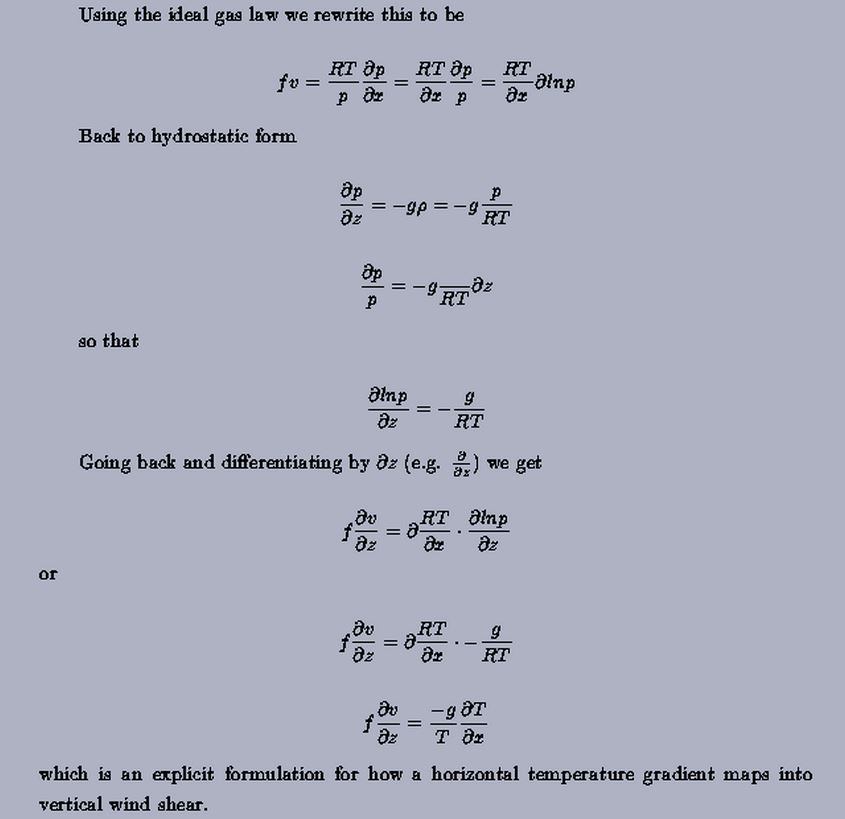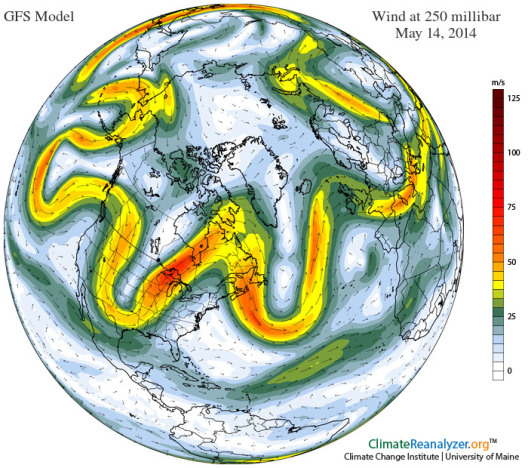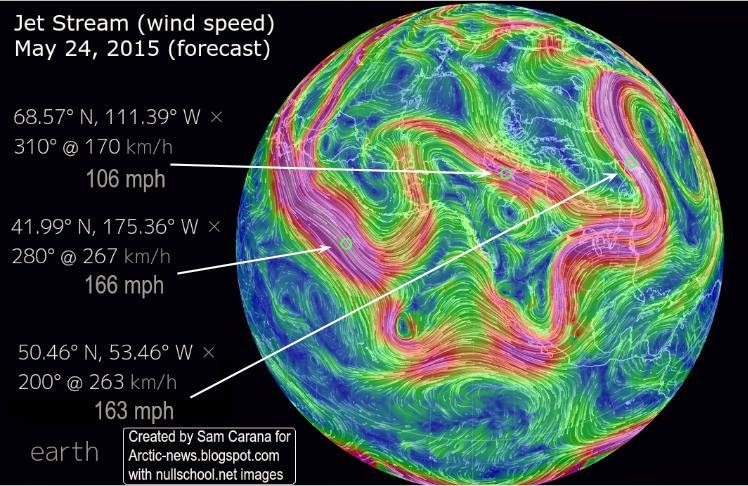

v denotes the meriodional component (e.g. NS) and x is a generic horizontal coordinate.



A horizontal temperature gradient exists while moving North-South along a meridian because the curvature of the Earth allows for more solar heating at the equator than at the poles. This creates a westerly geostrophic wind pattern to form in the mid-latitudes. Because thermal wind causes an increase in wind velocity with height, the westerly pattern increases in intensity up until the tropopause, creating a strong wind current known as the jet stream. The Northern and Southern Hemispheres exhibit similar jet stream patterns in the mid-latitudes.
Using the same Thermal Wind argument, the strongest part of the jet stream should be in proximity where temperature gradients are the largest. Due to the setup of the continents in the Northern Hemisphere, largest temperature contrasts are observed on the east coast of North America (boundary between Canadian cold air mass and the Gulf Stream/warmer Atlantic) and Eurasia (boundary between the boreal winter monsoon/Siberian cold air mass and the warm Pacific). Indeed, the strongest part of the boreal winter Northern Hemisphere jet is observed over east coast of North America and Eurasia as well.
A similar argument can be applied to the Southern Hemisphere. The lack of continents in the Southern Hemisphere should lead to a more constant jet with longitude (i.e. a more zonally symmetric jet), and that is indeed the case in observations.
 
|